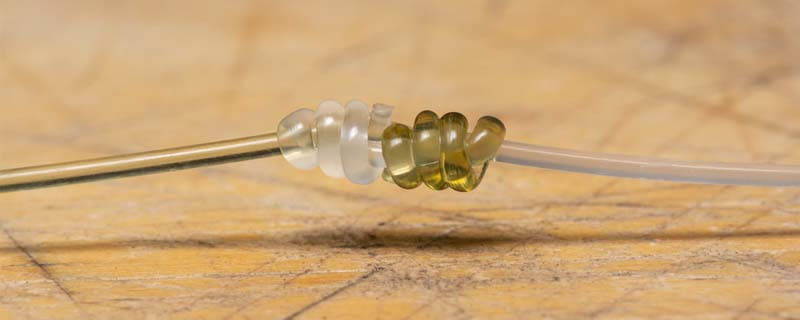One of the most crucial fishing skills to learn is how to tie two fishing lines together. If you are a professional fisherman/angler or a beginner, it is essential to master tying fishing knots. It would amaze you to know that there are some strong/firm knots you can select from if you need to tie two lines of varying diameters.
It is essential to mention that the intent of tying two fishing lines determines the knot type. Also, the type of knot is dependent on the speed. If you want to learn how to tie two fishing lines together, check out some common knots that I would be explaining in this piece:
Surgeon Knots
Surgeon knot is a versatile and one of the strongest fishing line knot commonly used among professional anglers. You can tie lines that have either different or the same sizes. The great part is, if you are stuck in unfavorable conditions, you can tie the surgeon knot without encountering many challenges.
If your hands are too stiff because of the cold, the surgeon knot is an appropriate knot for you to tie seamlessly. The beauty of learning the surgeon knot is that you will find it effortless to learn other knot types once you have mastered it.
1. Ensure the Lines Align
Place the lines side by side, and ensure they are placed at the parallel line with a six-inch overlap. Make sure the line to the reel and the line to the leader are in opposite directions. The reason for this is to make the knot functional. At this point, it is necessary to create a loop.
2. Form a Loop
To form a loop, hold both lines at their right-ends. Then, turn the lines and cross back over both lines when they meet at the parallel point to form a loop. Use the two lines to create an overlap by passing them over the loop to form a double-overhand knot with an additional pass via its loop.
Albright Knot

If you are searching for one of the most suitable knots to join lines with unequal diameters, the Albright knot is ideal. Similarly, if you have two lines that have different materials like braided lines and monofilaments, this knot works well. Some professional fly anglers love using the Albright knot to connect the fly line to the leader material.
Some anglers would take the extra step to remove the factory-produced loop so that they can use the Albright. Several fly fishermen would prefer to use the Albright knot to tie their fly line to Dacron backing. The Albright knot is very effortless and seamless to tie, and it is advised that every angler should have it.
1. Form a Loop
In the heavier/weightier line, form a loop and pass 10 inches of the lighter line across the loop. Then, between your index finger and your thumb, hold the three lines. Turn the light line over itself and do the same for the loop strands.
2. Make Tight Turns
Form ten, firmly wrapped turns. Tie the tag end via the loop and exit the same way it entered. You can wrap back-to-front or front-to-back, and the final result will remain the same. Ensure the lines leave on the very end of the loop. After, hold the ends of the heavy-line and draw the wraps towards the loop’s end. Tighten the light line by pulling it slightly and clip the tag-end near the knot.
Also Read: Best Monofilament Fishing Line – Top Selections That Suits You
Double Uni Knot
If you want to learn how to tie two fishing lines together, one of the most common knots for fishing line to line knot is the Double Uni Knot. Several anglers love this type of knot because it is durable, easy to tie, and can work with any line. Fishermen use the Double Uni Knot in both fresh and saltwater to join the line of different or similar strengths.
Some professional anglers use the Double Uni Knot because it is best to tie a braided line to a monofilament or fluorocarbon leader. Anglers find it effortless to tie instead of the Blood knot.
1. Overlap and Tighten
Overlap the lines’ end that will be joined. Take the first line’s end through the left and make a double-back to form either three or our wraps around both lines and the formed loop. Draw the tag end to make it firmer and tight. Repeat this step on the second line’s end to form the exact same wraps. If you want to tie with the braided line, increase the number of wraps by doubling it.
2. Tie and Clip
After doing the step above, you would have tied two uni-knots. Draw the standing lines in the opposite direction so that both knots can slide together. Then, clip close to the ends of the knot.
Blood Knot

The Blood knot is best to join two lines. And it is one of the preferred fishing line knots of fly fishermen. You can increase the knot’s strength by making a minimum of 5 wraps and a maximum of 7 wraps on each knot’s side. The blood knot is one of the ideal fishing knots used when the lines have similar diameter values.
If you want to create a tapered-leader for fly fishing, you can tie a blood knot series by reducing the leader material’s pound-strength. You will join segments of about 24 inches to form a tapered leader useful in fly fishing.
1. Overlap and Twist
To form the blood knot, overlap the lines’ end that will be joined. Twist one line around the other to make five turns. Then, return the tag end between both lines. Repeat this step with the second end by wrapping in the opposite direction and make five turns.
2. Wrap and Gather
After the above step, pull the lines slowly in their opposite directions for the turns to wrap and gather. Then, clip the end of the lines close to the knot.
Also Read: How to Spool a Reel – the Correct Technique
Aussie Quickie
The Aussie Quickie is one of the best knots to learn how to tie two fishing lines together. And it is achieved by tying a braided line to a fluorocarbon leader. First off, you create the Aussie Quickie knot by forming a Bimini Twist, characterized by forming a double-line in the braid.
After you tie the Bimini twist, the fluorocarbon leader is attached quickly. The Yucatan Knot is similar to this; however, it is tied in another way. When you are tying the Aussie Quickie, the wraps are made with the single-line leader. In comparison, if you are tying the Yucatan knot, the wraps are produced with the double-line.
When you pull both knots tightly, the coils are produced in the leading material, with the completed knots looking alike. The Bristol Knot is also similar to the Aussie Quickie and the Yucatan knot. And all of them make ideal knots that connect a double-line braided system with a fluorocarbon-leader.
1. Form a Bimini Twist
In the primary braided-line, make a Bimini Twist Knot to form a double-line section loop to the needed length. If you want a quicker means, you can use the Spider Hitch or the triple Suregeon’s loop. The only downside of using these substitutes is, you will lose some strength.
2. Make 13 Wraps
Lay six-inches of the fluorocarbon leader on the double line. Then, wrap the leader around the double line behind the loop end, and work from the loop by making 13 wraps. Then, hold the leader’s tag end and return it to the loop. Pass the tag end via the loop and clasp to hold firm.
With your fingers firmly holding the double line, gradually pull the leader. This means you should give the tag end the freedom to hang undisturbed. The leader coils then form a neat wrap, which makes the tag end stick out the knot. After, trim near the knot when you pull hard on both lines so that the knot will remain sturdy in place.
Yucatan Knot
The Yucatan knot is similar to the Albright special, so people mistake them for one another. The Yucatan knot line is formed when the wraps have double lines around the single leader line. It would interest you to learn that the Yucatan knot is firmer than the Slim Beauty and Albright knot, which are both top-notch single-strand knots.
It is correct to say that the Yucatan knot is the firmest mono leader-braided line knot. And the doubled- main line is usually formed with the Bimini Twist.
1. Lay Parallel Lines
Lay the doubled main-line from the reel and the leader at parallel lines. As earlier mentioned, you can create the doubled-main line with a Bimini twist. Wrap the doubled-line round the leader between four-six times if you use fluoro or monocarbon. If you are using a braided reel, wrap the doubled-line ten-fifteen times.
2. Draw Double Lines and Tighten the Knot
Run the end of the leader via a loop at the doubled line’s end. Draw the leader and the doubled line in opposite directions for tightening the knot. It is imperative to recollect that even though the wraps were formed with the doubled line, the leader will be wrapped unto the doubled line when you pull the knot tight.
Also Read: Best Fluorocarbon Lines – Top Selections From A Fishing Expert!
Conclusion
Asides from the methods in this guide on how to tie two fishing lines together, it is crucial to mention that there are other means of tying fishing lines. However, the methods in this guide are simple and seamless. And they can be done effortlessly when you find yourself with emergencies on the sea.
Also, one of the tips to tie a fishing line is, you must be certain of the quality of the fishing line before you purchase them. This is to prevent breakage during use.

